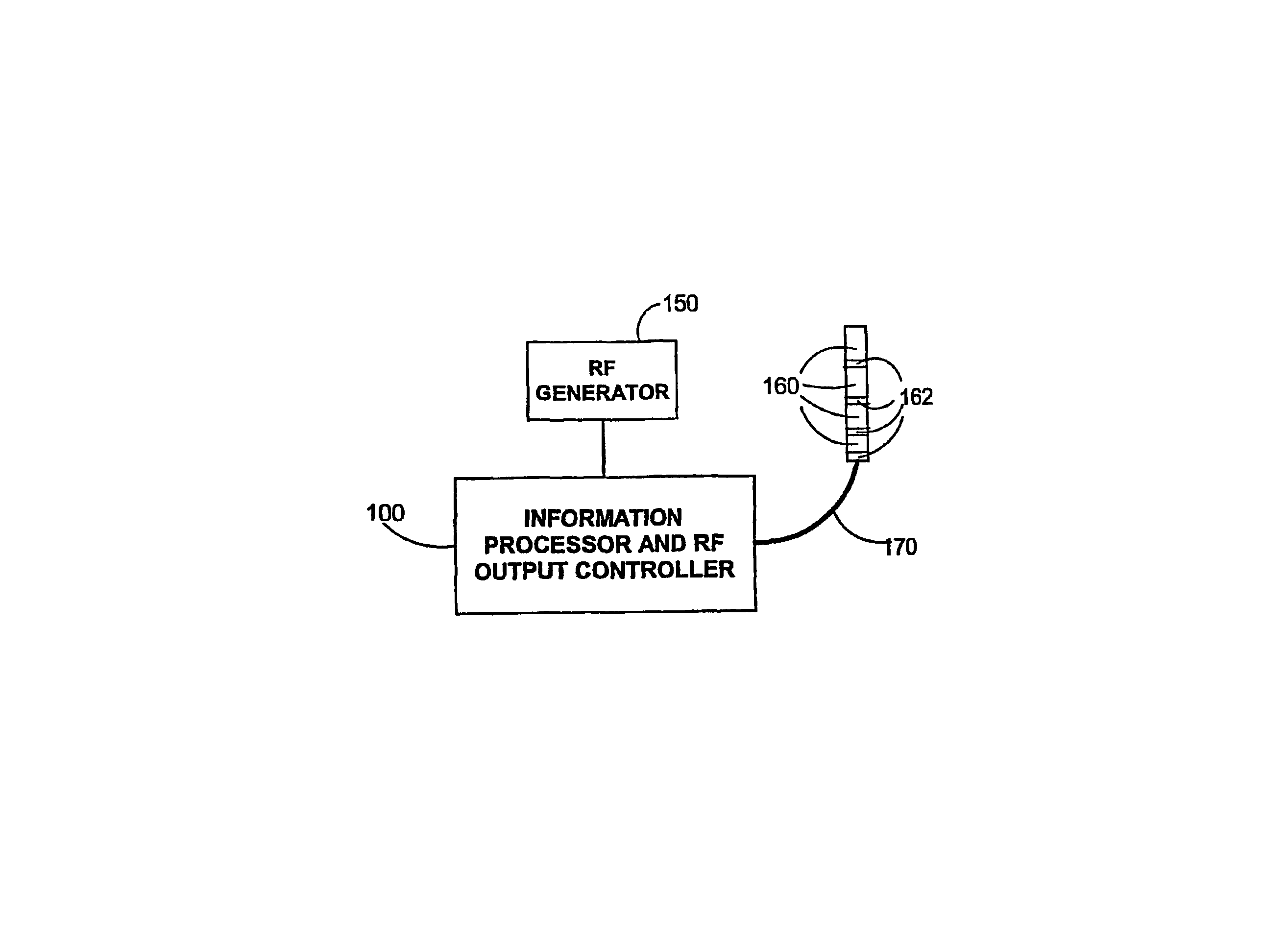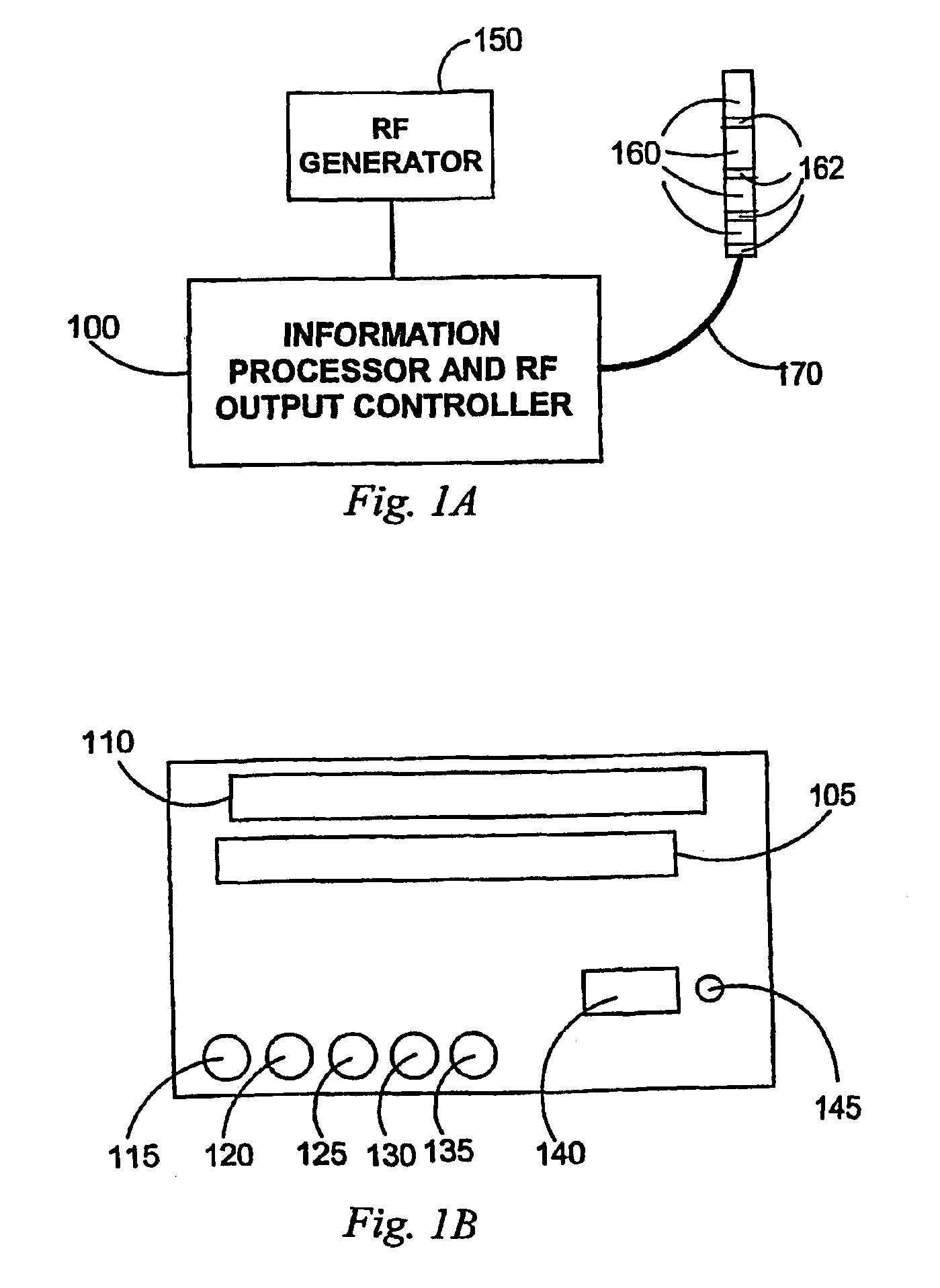Multi-channel RF energy delivery with coagulum reduction
a technology of coagulum reduction and rf energy, which is applied in the field of multi-channel rf energy delivery with coagulum reduction, can solve the problems of insufficient rf energy delivery efficiency and current methods and systems, and achieve the effect of improving the effectiveness of an ablation procedure and reducing the risk of an ineffective ablation procedur
- Summary
- Abstract
- Description
- Claims
- Application Information
AI Technical Summary
Benefits of technology
Problems solved by technology
Method used
Image
Examples
example
[0083]A study was performed to analyze factors that affect coagulation formation during cardiac ablation, and to set parameters to minimize coagulation formation during this procedure. More specifically, the study was performed, at least in part, to analyze the rate of RF power delivery through ablation catheter electrodes with respect to target temperature set-points, and to determine its correspondence to coagulum formation.
[0084]This study was based on RF ablation data from 398 independent ablation episodes derived from 15 patient cases randomly picked from Phase II of the CARDIMA REVELATION™ Tx U.S. multicenter clinical trials. Patient entry criteria were symptomatic paroxysmal atrial fibrillation (PAF), refractory to at least 2 anti-arrhythmic drugs, with 3 PAF episodes within the 30 day baseline observation period. In this multicenter clinical protocol, the use of anti-coagulation agents followed these guidelines for all patients receiving RF ablation: Coumadin OK was disconti...
PUM
 Login to View More
Login to View More Abstract
Description
Claims
Application Information
 Login to View More
Login to View More - R&D
- Intellectual Property
- Life Sciences
- Materials
- Tech Scout
- Unparalleled Data Quality
- Higher Quality Content
- 60% Fewer Hallucinations
Browse by: Latest US Patents, China's latest patents, Technical Efficacy Thesaurus, Application Domain, Technology Topic, Popular Technical Reports.
© 2025 PatSnap. All rights reserved.Legal|Privacy policy|Modern Slavery Act Transparency Statement|Sitemap|About US| Contact US: help@patsnap.com



